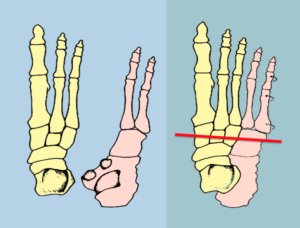
The Feet Might Be Your Most Important Body Part
Your feet determine so much about how the rest of your body works.
And foot care is all-important because people don’t grow old without good feet.
Keep your feet in decent shape and you are likely to keep the rest of your body working longer.
The human foot is made up of 26 bones, 33 joints with 20 or more ways to move. There are more than a hundred muscles, ligaments, and tendons within the feet.
The bottom of the two shin bones, tibia and fibula encase the top and side of the talus bone to form the ankle joint.
The ankle is a mortise and tenon type of joint which limits the movement of the ankle to a strict hinge. The knee which is often thought of as a hinge joint actually has more give.
Movement takes place within the 26 bones of the foot.
The foot can be subdivided into three sections: the hindfoot, midfoot, and forefoot.
The hindfoot is composed of the talus, the calcaneus (the heel), and the navicular.
The calcaneus is the largest bone of the foot and a landing pad for each step we take.
The midfoot is composed of four bones, the cuboid, and three cuneiform bones.
The forefoot is the five toes—the metatarsal and phalangeal bones.
There are three arches in each foot—the inner arch, the outer arch, and the transverse arch.
The outer and transverse arches are lifted up by the peroneus brevis and longus respectively.
One muscle for each arch.
The inner arch is hoisted up by the tibialis posterior and anterior with the help of the flexor hallucis longus and flexor digitorum longus.
The inner arch is the weight-bearing arch so it gets help from more muscles. But the tibialis posterior is doing most of the work.
The foot is a spring arch and ligaments and fascia provide stability and allow for the spring action of the arches.
Twelve muscles from the leg insert on and move the foot while twenty muscles are within the foot itself.
There is one layer of muscle on the top of the foot and four layers below.
The arches of the feet form in response to the demand of the muscles of the lower leg and the arches are literally hoisted by the strength of these muscles.
Get to know your feet.
Look at them and see what they can do.
Give them the gift of more movement.
Supple feet and ankles make for supple hips as everything in the body is connected.
***
